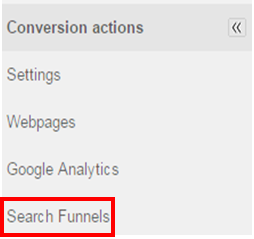
If you start creating a list of everything you need to do for a successful social media campaign, you may end up with a “list” that looks more like a book.
Even if you stick to the most popular social media sites, you would still be looking at creating a strategy for a half dozen networks. Each strategy has to be unique to the site and the customers you are targeting for each. You can end up putting a lot of time and money into getting the results you want.
You can easily get overwhelmed and burn through your resources quickly.
Instead, you can prioritize your social media to-do list so that you perform the most important work first and make the biggest impact with the resources you have. The best way to do that is to rank your tasks in terms of how important or urgent they are to meeting your goals. Here’s a look at what tasks might qualify:
Important and Urgent Tasks
Important tasks are pretty self-explanatory – they are the posts that have the most impact on your social media strategy.
Urgent tasks are those that are time-sensitive.
Post creation and scheduling typically falls under both categories. Publishing is the bulk of what you do on social media, so it is perhaps the most important job. It is also urgent because you need to have a steady stream of content, so you will need to publish daily or multiple times a day.
Post engagement would also fall under both categories. The goal is to have people commenting, liking and sharing your posts as they are published, so you should expect to respond to comments as frequently as you are posting. Allowing comments to sit unanswered signals to your followers that you are not interested in having a conversation, but just want to post and promote.
Finally, you should include monitoring social media in general in this top category. You need to look at your competitors’ channels, as well as the main feed to find out what’s trending and what’s important to your customers.
Important Tasks that Aren’t Urgent
Some essential social media marketing tasks are not time-sensitive, so they are not urgent.
For example, planning your strategy is certainly important, but it is not an urgent task. It is a long-term task. You should have a plan at the outset, and then you should revisit your plan periodically. You can return to your plan quarterly or on another calendar that makes the most sense for your goals.
Analysis is also important but not urgent. You will need to monitor your analytics regularly and to produce reports for your marketing team members. However, this is not something that you have to do every day.
If you have a hot or controversial post, you might want to monitor those analytics on a case-by-case basis. Otherwise, you can look at your numbers weekly or even monthly, depending on your goals.
Testing is also an important but not urgent task. You should be conducting split testing on what kind of headlines and posts get more clicks, what ads are most effective and more. This should be ongoing, but it doesn’t have to happen with every post. You can make testing a part of your long-term plan.
Urgent but Not Important Tasks
What falls under this category really depends on your overall goals and the general environment of your niche.
For example, monitoring the competition can often fall under urgent but not important tasks for many brands. It is urgent because it is time-sensitive. Brands are constantly generating content and shaping the conversation, so you have to be diligent if you want to stay a part of the latest trends.
However, it may not be important to closely monitor your competition if you are in a smaller niche without as much competition or if your competitors are not incredibly active on social media. You also may consider it less important when compared to other social media tasks.
Not Important or Urgent
Again, the tasks you consider to be neither very important or urgent to your social media strategy will vary according to your goals and your industry.
If tasks fall under these categories, it doesn’t mean that you don’t need to do them at all. It just means that other tasks are more important or more time-sensitive.
Monitoring trending topics or industry news might be tasks that fall under these categories – unless you are a news site or in the tech industry, for example.
The best way to determine what priority tasks should have is to make a list of them all and then to group them into these four categories. You will get a better idea of where you need to spend the majority of your time to make the most of the budget you have. You can then get to the other tasks as time and budget allow.
Digital & Social Articles on Business 2 Community(38)
Report Post





